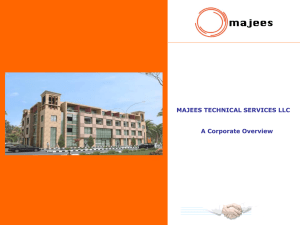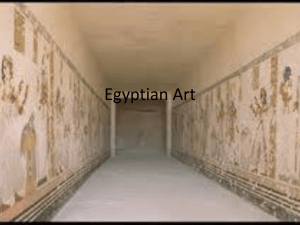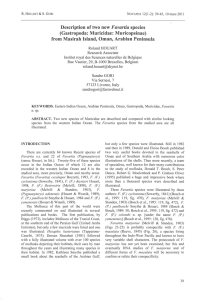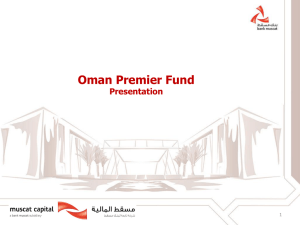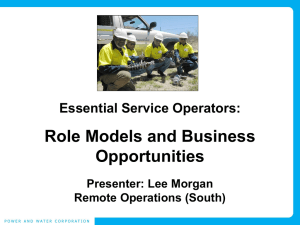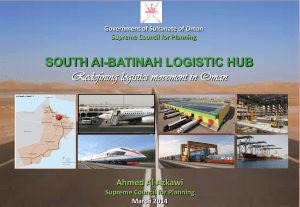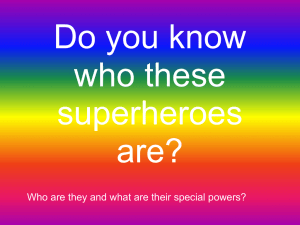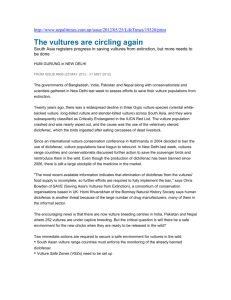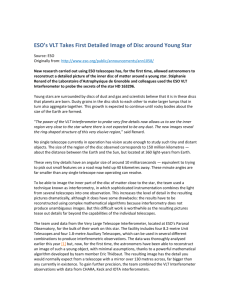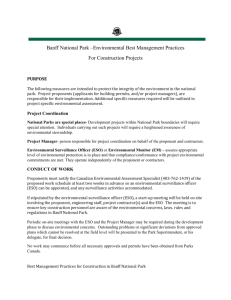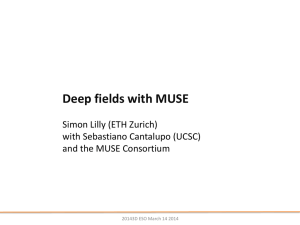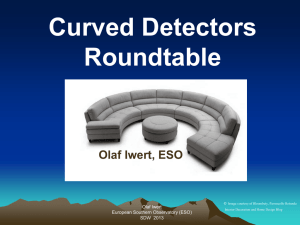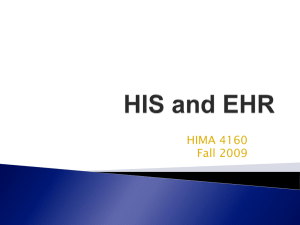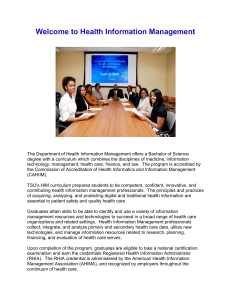Egyptian Vulture
advertisement
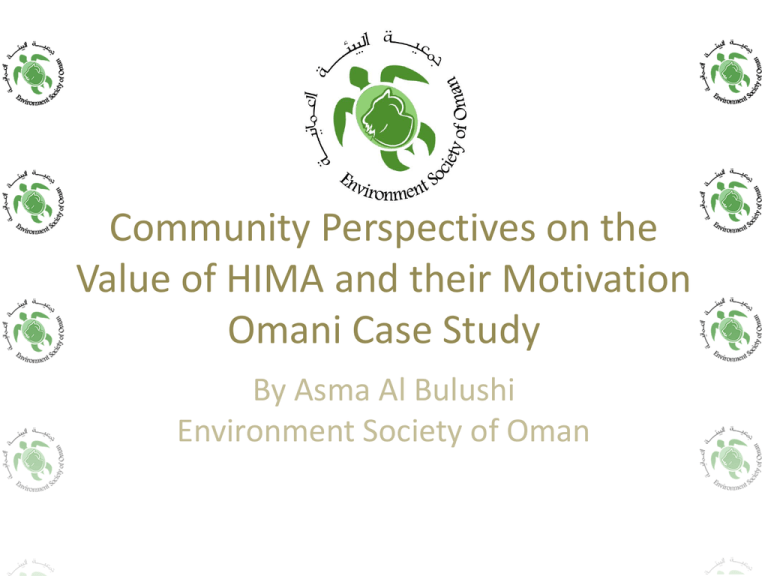
Community Perspectives on the Value of HIMA and their Motivation Omani Case Study By Asma Al Bulushi Environment Society of Oman Outline • Introduction about ESO • Social involvement in the Conservation of the endangered Egyptian Vulture in Oman (ESO, Hima Fund): – Social survey. – Monitoring & Capacity building in local community. – Women Socioeconomic Development. • Women’s Environmental Education and Empowerment (ESO) Environment Society of Oman • ESO was founded in March 2004 by Omanis representing different regions and many different professional backgrounds. • Our official ESO logo, designed to represent the key threated animal in Oman , turtle with an outline of a Wa'al (Arabian Tahr) on its shell, symbolizing both the marine and terrestrial environment. Aims of ESO • To help educate and to raise awareness of environmental issues. • To enable the public to become actively involved in conservation by organizing participatory events. • To provide a forum for exchange of ideas and information related to the human and natural environment of Oman. • To foster co-operation between government, NGO's and the private sector to promote conservation of Oman's human and natural environment. • To carry out field research of Oman's human and natural environment in order to help provide the necessary information for conservation initiatives. Project & Events of ESO Current Projects: • Project Frankincense • Egyptian Vulture • Women Education & Empowerment • Renaissance Whale & Dolphin project • Turtle Conservation Project & Events of ESO Outreach Campaigns & Events: • Earth Hour (last Saturday in every March) • Intercollege Environmental speaking competition –ICSC(October-November) • Masirah festival (One week in April) • Tree planting campaigns (One week in April) Conservation of the endangered Egyptian Vulture in Oman Environment Society of Oman Funded by “Hima Fund” Photo by: Ivaylo Angelov Part of Project objective – Develop local capacity among key educational institutions in Oman by engaging Omanis students. - Enhance the local/national knowledge of endangered birds, and particularly Egyptian Vultures within local communities, by working with the Omani Women Association. Questionnaire (Social Survey) • The questionnaire was filled by interviewing the community from different groups (women, fishermen, elderly people, students, public and private sector employees) • Aims: • Perception, local stories, local information were recorded • Raising interest and awareness at the same time. Questionnaire (Social Survey) • Some Opinions: • 68% of the people interviewed think the Egyptian Vulture should be protected, 32% consider that the bird does not require special protection because it is not endangered on the Island. • 56% think the bird is not respected on the island, because it is a threat to livestock, it has a bad smell and it lives and feeds on rubbish. 39% of local habitants view the fact that the birds feeds on rubbish and dead animals as an asset, as it cleans the environment. • 68% of the people interviewed think the Egyptian Vulture is increasing in population. Interviewing Masirah Community & filling Questionnaire Capacity building and training for local people in HIMA area • • 3 of ESO field assistant (rangers) are originally from Masirah and working in different ESO projects such as Egyptian vulture The field assistant trained by two experts: Ivaylo Angelov and Mike Mcgrady in 2 phases (Feb and May & October): – learning more about the behaviors of territorial vultures. – Aiding and searching for territories, identification of nest sites, – Aging of breeders, accessing nest sites – Observation and Record keeping – Searching for food source in the island, achieving a specific counting and aging birds (adult and juvenile ) in the feeding sites (dumpsite areas) – Trap the bird and take the measurement, and ring the bird,. Positives: • • • • • Independency - continue counting the juvenile and adult to built a data base for Masirah Island and continue observing the ringed bird. loggerhead turtle conservation gave them advance skill They are more aware about their natural resource, they feel scared when huge stranding is appearing in their area More responsible to find a solution for every problem faced their natural resources Open to accept the solution even it was tough and cost a lot. Phase 1 Fig: Capacity building of local area in Masirah island Phase 2 Fig: Trapping, ringing, handling and measuring vultures. Women Socioeconomic Development • Masirah island has a rich biodiversity (Egyptian vulture, 4 species of sea turtle are nesting and marine mammals (whales and dolphins) the socioeconomic context of the island • The fishing industry provides most of the incomes to the people of the island • Socioeconomic activates were chosen to link between the environment and a new training and job opportunities on the island Aims of Women Socioeconomic Development • ESO designed the program to target the women of Masirah: • Develop a relationship between the local community and their surrounding environment by creating positive interactions • Develop the potential for a sustainable income generating project for the local community, where they can improve their livelihoods while working towards protection of their local environmental resources • Develop Omani women’s vocational skills in the local community to reach certain level of proficiency Training Programs • Two professional training programs for the women of Masirah was designed and developed: – Recycling paper and packaging – Silkscreen printing Silkscreen printing • 11 women were trained on silkscreen printing. • 2 week of training • handmade printing techniques. • The designs reflected their local biodiversity: – Egyptian vultures – loggerhead sea turtles – whales and dolphins • Printed on recycled paper as well as T-shirts, and drinking glasses. Recycling paper and packaging • 11 women were trained on silkscreen printing. • 2 week of training • They used both artificial as well as natural dyes from henna and squid ink. • various products were created: notebooks, pens, greeting cards, frames, 3D moulds and key chains. Women’s Environmental Education and Empowerment • ESO in coordination with the Omani Women’s Association in 8 regions Objectives • Raise the awareness on environmental issues • Equip women with basic data collection, research analysis and communication tools • Empower women to approach decision makers (Majlis Ash’ Shura representatives of their regions) • Develop a community-led action plan to mitigate the environmental problems • Training of the trainers – shared experiences with neighboring regions Women’s Empowerment • 2 phases targeting 8 OWA’s • >200 women trained on how to conduct background research, data collection, documentation. • Developed and submitted essays addressing environmental issues and mitigation plans • 8 winners met with their regional Majlis Ash’shura representatives and developed a report with recommendations addressed to the President of Majlis As’Shura • Empowered women and gave them the confidence to approach decision makers – TOT to other regions Women’s Empowerment • Phase 1 (2010-2011) – Muscat, Nizwa, Sohar and Salalah • Phase 2 (2011-2012) – Sur, Ibri, Khasab, Yankul • Phase 3 (2014-2015) – Implementation of mitigation measures for 2 projects • • Environmental and Health Impacts of the Waste Generated from the Gold and Copper Mine in Yankul. Environmental and Health issues from Industries in Sohar Phase 3 (2014- 2015) • Develop survey and advocacy tools further • Research Assistants – public participation sessions, focus groups • Communication skills, confidence • Create partnerships among stakeholders to enhance collaboration between civil society organisations, public authorities and the private sector in Oman. The Obstacles • The environmental problems has to be addressed in the right way. • Many individuals notice the environmental problems, the progress to solve the problems take long time (some people give up from first stage). • Many organization that have the authority are not collaborated, the community need support. • Most of the expert are worried from local people, to not take their position (capacity building). • Difficult to work with local community in some areas to change their behavior. Thank you!! ?


